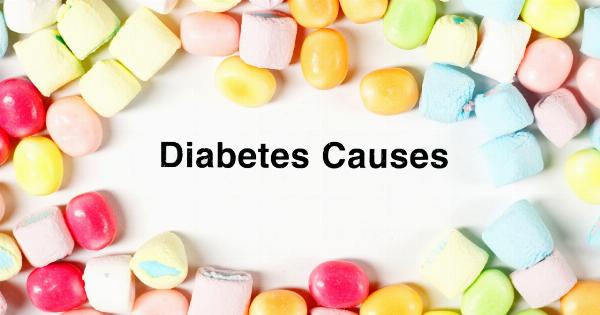Cholesterol, a waxy substance produced by the liver and found in certain foods, is essential for various bodily functions. However, when its levels exceed healthy limits, it can lead to serious health problems.
High cholesterol is a significant concern worldwide, affecting both men and women. While it is a prevalent issue for all, emerging evidence suggests that high cholesterol poses different risks and impacts on men and women.
In this article, we will explore the dangers of high cholesterol as a gender-specific issue and delve into the implications it has for both sexes.
Understanding Cholesterol and Its Role in the Body
Before diving into the gender-specific risks associated with high cholesterol, it is crucial to understand what cholesterol is and its important role in the body.
Cholesterol plays a key role in the production of hormones, cell membranes, and bile acids, which aid in the digestion of fats. It is transported through the bloodstream in different types of lipoproteins, namely low-density lipoprotein (LDL) and high-density lipoprotein (HDL).
The Bad and the Good: LDL vs. HDL Cholesterol
LDL cholesterol, often known as “bad” cholesterol, transports cholesterol particles from the liver to cells in the body.
When LDL cholesterol levels are elevated, these particles can build up in the arterial walls, forming plaques that narrow the arteries, leading to a condition called atherosclerosis. This reduces blood flow and increases the risk of heart disease, heart attacks, and strokes.
HDL cholesterol, on the other hand, is often referred to as “good” cholesterol. HDL particles remove excess cholesterol from the cells and artery walls, transporting it back to the liver for elimination.
Higher levels of HDL cholesterol are associated with a lower risk of heart disease.
Gender-Specific Risks of High Cholesterol
Although high cholesterol is a concern for both men and women, research suggests that gender plays a role in the risks and consequences associated with elevated cholesterol levels.
Here, we will highlight the specific dangers that high cholesterol poses for each gender.
Risks for Men
Men often face a higher risk of cardiovascular disease compared to women. This increased risk is partly attributed to higher levels of LDL cholesterol.
Men naturally have higher LDL cholesterol levels than premenopausal women, putting them at a higher risk of developing atherosclerosis and related conditions.
Moreover, studies have shown that men with high cholesterol are more likely to experience heart attacks at an earlier age compared to women. This suggests that high cholesterol has a more immediate and severe impact on cardiovascular health in men.
Risks for Women
While men are more prone to heart diseases, it is essential not to overlook the risks faced by women. In the past, heart disease was predominantly associated with men, leading to underdiagnosis and undertreatment in women.
However, recent studies have shed light on the unique risks women face when it comes to high cholesterol.
Women tend to experience an increase in LDL cholesterol levels after menopause. The drop in estrogen levels during this stage contributes to the rise in LDL cholesterol.
This shift in cholesterol levels makes women postmenopause more susceptible to heart disease, with their risk approaching that of men.
Another notable danger for women is related to pregnancy. Developing gestational diabetes, pre-eclampsia, or giving birth to a child with low birth weight can increase a woman’s risk of developing high cholesterol levels later in life.
These high cholesterol levels, combined with other risk factors, further elevate the chances of cardiovascular complications.
Prevention and Management Strategies
Regardless of gender, managing and preventing high cholesterol is essential to maintaining good overall health and preventing cardiovascular diseases. Here are a few strategies that apply to both men and women:.
1. Healthy Diet
Adopting a heart-healthy diet is crucial in managing cholesterol levels. Limiting the intake of saturated fat, trans fat, and cholesterol-rich foods can help reduce LDL cholesterol.
Increasing the consumption of fruits, vegetables, whole grains, and lean proteins contributes to a healthier lipid profile.
2. Regular Exercise
Physical activity has numerous benefits, including reducing LDL cholesterol levels and increasing HDL cholesterol levels. Engaging in regular aerobic exercise, such as brisk walking, cycling, or swimming, can improve overall cholesterol profiles.
3. Smoking Cessation
Smoking damages blood vessels, lowers HDL cholesterol, and raises LDL cholesterol levels. Quitting smoking not only benefits overall health but also aids in managing cholesterol levels effectively.
4. Weight Management
Maintaining a healthy weight is essential for managing cholesterol levels. Losing excess weight can help lower LDL cholesterol and increase HDL cholesterol.
Combining a healthy diet and regular exercise is key to achieving and maintaining a healthy weight.
Conclusion
High cholesterol is a significant health concern, affecting both men and women worldwide. While the risks and consequences associated with high cholesterol are similar for both sexes, some gender-specific differences exist.
Men face a higher risk of cardiovascular diseases due to naturally higher LDL cholesterol levels. On the other hand, women experience an increase in LDL cholesterol after menopause, leading to a higher risk of heart disease. Additionally, certain factors, such as pregnancy-related complications, contribute to elevated cholesterol levels in women.
Implementing preventive measures, including a healthy diet, regular exercise, and weight management, is crucial for managing cholesterol levels and reducing the risks associated with high cholesterol.


























